Cover
Frontmatter
Half Title Page
Title Page
Copyright
Contents at A Glance
Table of Contents
Preface
Chapter 1. The Breadth and Depth of DSP
The Roots of DSP
Telecommunications
Audio Processing
Echo Location
Image Processing
Chapter 2. Statistics, Probability and Noise
Signal and Graph Terminology
Mean and Standard Deviation
Signal vs. Underlying Process
The Histogram, Pmf and Pdf
The Normal Distribution
Digital Noise Generation
Precision and Accuracy
Chapter 3. ADC and DAC
Quantization
The Sampling Theorem
Digital-to-Analog Conversion
Analog Filters for Data Conversion
Selecting the Antialias Filter
Multirate Data Conversion
Single-Bit Data Conversion
Chapter 4. DSP Software
Computer Numbers
Fixed Point (Integers)
Floating Point (Real Numbers)
Number Precision
Execution Speed: Program Language
Execution Speed: Hardware
Execution Speed: Programming Tips
Chapter 5. Linear Systems
Signals and Systems
Requirements for Linearity
Static Linearity and Sinusoidal Fidelity
Examples of Linear and Nonlinear Systems
Special Properties of Linearity
Superposition: The Foundation of DSP
Common Decompositions
Alternatives to Linearity
Chapter 6. Convolution
The Delta Function and Impulse Response
Convolution
The Input Side Algorithm
The Output Side Algorithm
The Sum of Weighted Inputs
Chapter 7. Properties of Convolution
Common Impulse Responses
Mathematical Properties
Correlation
Speed
Chapter 8. The Discrete Fourier Transform
The Family of Fourier Transform
Notation and Format of the Real DFT
The Frequency Domain's Independent Variable
DFT Basis Functions
Synthesis, Calculating the Inverse DFT
Analysis, Calculating the DFT
Duality
Polar Notation
Polar Nuisances
Chapter 9. Applications of the DFT
Spectral Analysis of Signals
Frequency Response of Systems
Convolution via the Frequency Domain
Chapter 10. Fourier Transform Properties
Linearity of the Fourier Transform
Characteristics of the Phase
Periodic Nature of the DFT
Compression and Expansion, Multirate Methods
Multiplying Signals (Amplitude Modulation)
The Discrete Time Fourier Transform
Parseval's Relation
Chapter 11. Fourier Transform Pairs
Delta Function Pairs
The Sinc Function
Other Transform Pairs
Gibbs Effect
Harmonics
Chirp Signals
Chapter 12. The Fast Fourier Transform
Real DFT Using the Complex DFT
How the FFT Works
FFT Programs
Speed and Precision Comparisons
Further Speed Increases
Chapter 13. Continuous Signal Processing
The Delta Function
Convolution
The Fourier Transform
The Fourier Series
Chapter 14. Introduction to Digital Filters
Filter Basics
How Information Is Represented in Signals
Time Domain Parameters
Frequency Domain Parameters
High-Pass, Band-Pass and Band-Reject Filters
Filter Classification
Chapter 15. Moving Average Filters
Implementation by ConvoIution
Noise Reduction vs. Step Response
Frequency Response
Relatives of the Moving Average Filter
Recursive Implementation
Chapter 16. Windowed-Sinc Filters
Strategy of the Windowed-Sinc
Designing the Filter
Examples of Windowed-Sinc Filters
Pushing It to the Limit
Chapter 17. Custom Filters
Arbitrary Frequency Response
Deconvolution
Optimal Filters
Chapter 18. FFT Convolution
The Overlap-Add Method
FFT Convolution
Speed Improvements
Chapter 19. Recursive Filters
The Recursive Method
Single Pole Recursive Filters
Narrow-Band Filters
Phase Response
Using Integers
Chapter 20. Chebyshev Filters
The Chebyshev and Butterworth Responses
Designing the Filter
Step Response Overshoot
Stability
Chapter 21. Filter Comparison
Match #1: Analog vs. Digital Filters
Match #2: Windowed-Sinc vs. Chebyshev
Match #3: Moving Average vs. Single Pole
Chapter 22. Audio Processing
Human Hearing
Timbre
Sound Quality vs. Data Rate
High Fidelity Audio
Companding
Speech Synthesis and Recognition
Nonlinear Audio Processing
Chapter 23. Image Formation & Display
Digital Image Structure
Cameras and Eyes
Television Video Signals
Other Image Acquisition and Display
Brightness and Contrast Adjustments
Grayscale Transforms
Warping
Chapter 24. Linear Image Processing
Convolution
3x3 Edge Modification
Convolution by Separability
Example of A Large PSF: Illumination Flattening
Fourier Image Analysis
FFT Convolution
A Closer Look at Image Convolution
Chapter 25. Special Imaging Techniques
Spatial Resolution
Sample Spacing and Sampling Aperture
Signal-to-Noise Ratio
Morphological Image Processing
Computed Tomography
Chapter 26. Neural Networks (and More!)
Target Detection
Neural Network Architecture
Why Does It Work?
Training the Neural Network
Evaluating the ResuIts
Recursive Filter Design
Chapter 27. Data Compression
Data Compression Strategies
Run-Length Encoding
Huffman Encoding
Delta Encoding
LZW Compression
JPEG (Transform Compression)
MPEG
Chapter 28. Digital Signal Processors
How DSPs Are Different from Other Microprocessors
Circular Buffering
Architecture of the Digital Signal Processor
Fixed versus Floating Point
C versus Assembly
How Fast Are DSPs?
The Digital Signal Processor Market
Chapter 29. Getting Started with DSPs
The ADSP-2106x Family
The SHARC EZ-KIT Lite
Design Example: An FIR Audio Filter
Analog Measurements on A DSP System
Another Look at Fixed versus Floating Point
Advanced Software Tools
Chapter 30. Complex Numbers
The Complex Number System
Polar Notation
Using Complex Numbers by Substitution
Complex Representation of Sinusoids
Complex Representation of Systems
Electrical Circuit Analysis
Chapter 31. The Complex Fourier Transform
The Real DFT
Mathematical Equivalence
The Complex DFT
The Family of Fourier Transforms
Why the Complex Fourier Transform Is Used
Chapter 32. The Laplace Transform
The Nature of the s-Domain
Strategy of the Laplace Transform
Analysis of Electric Circuits
The Importance of Poles and Zeros
Filter Design in the s-Domain
Chapter 33. The z-Transform
The Nature of the z-Domain
Analysis of Recursive Systems
Cascade and Parallel Stages
Spectral Inversion
Gain Changes
Chebyshev-Butterworth FiIter Design
The Best and Worst of DSP
Backmatter
Glossary
Index
Back Cover
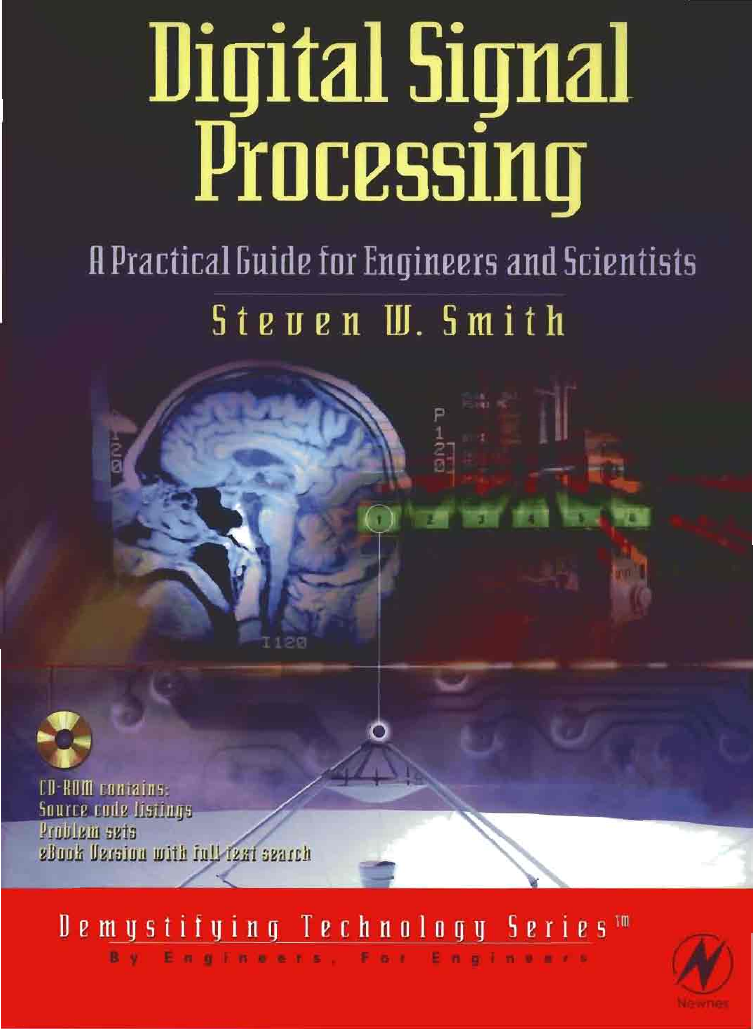
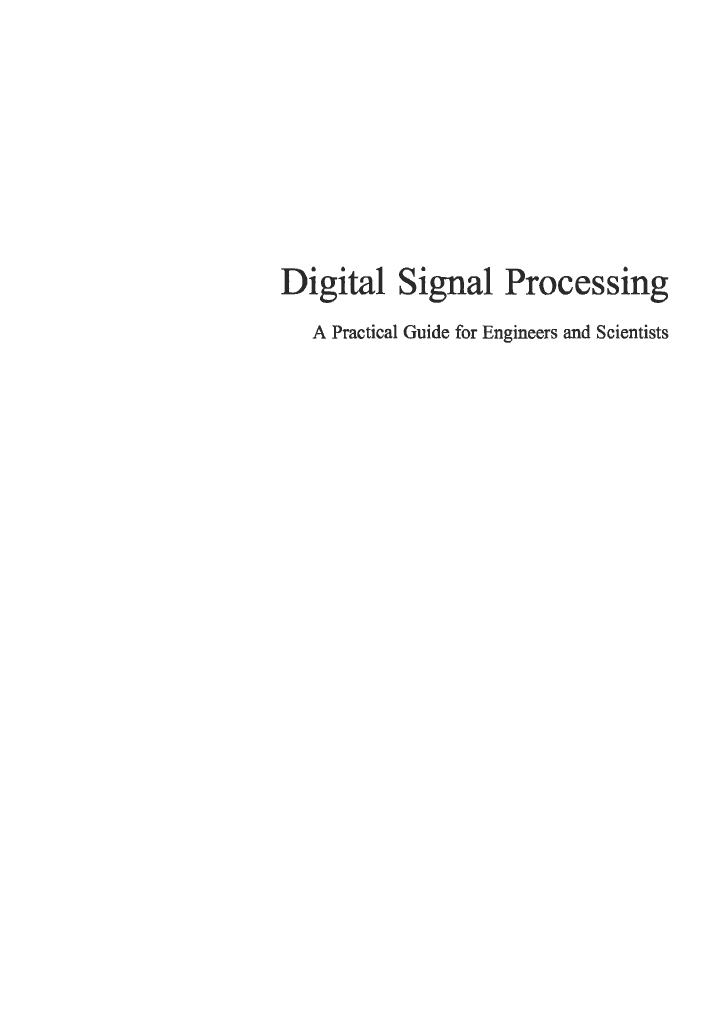

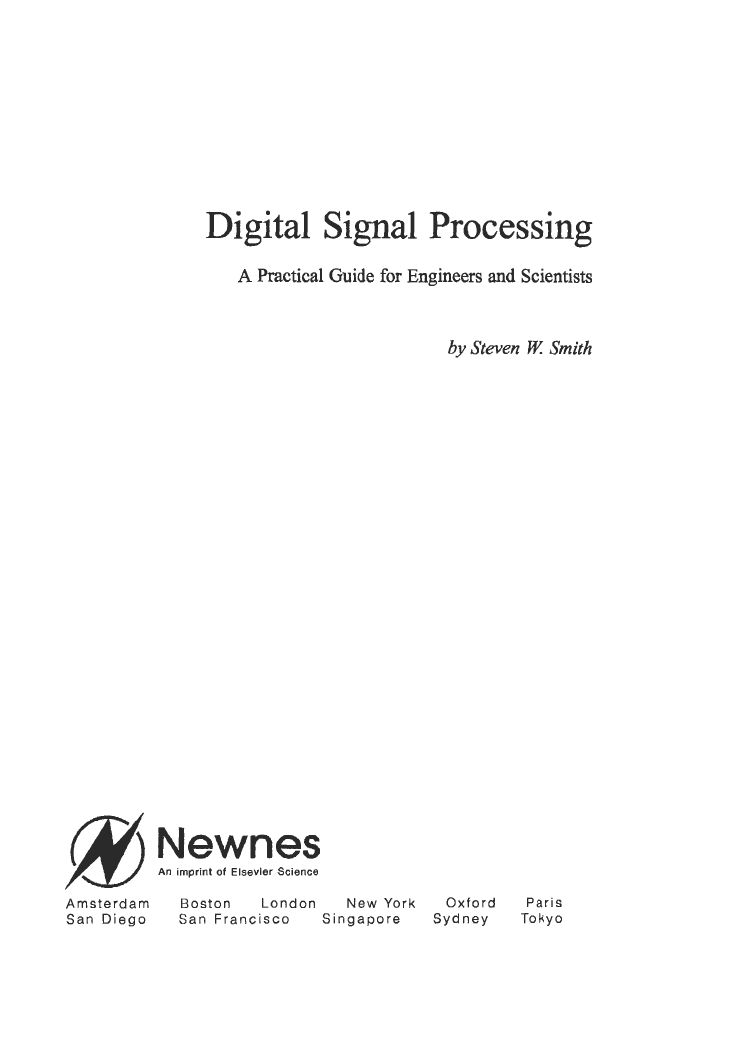

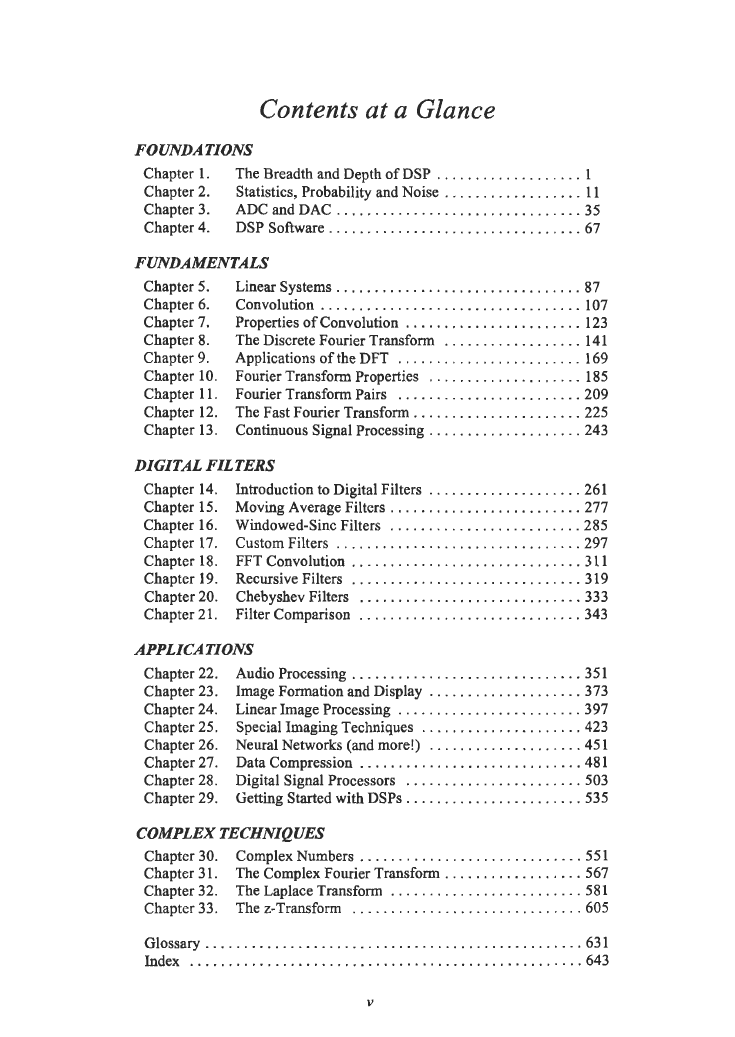
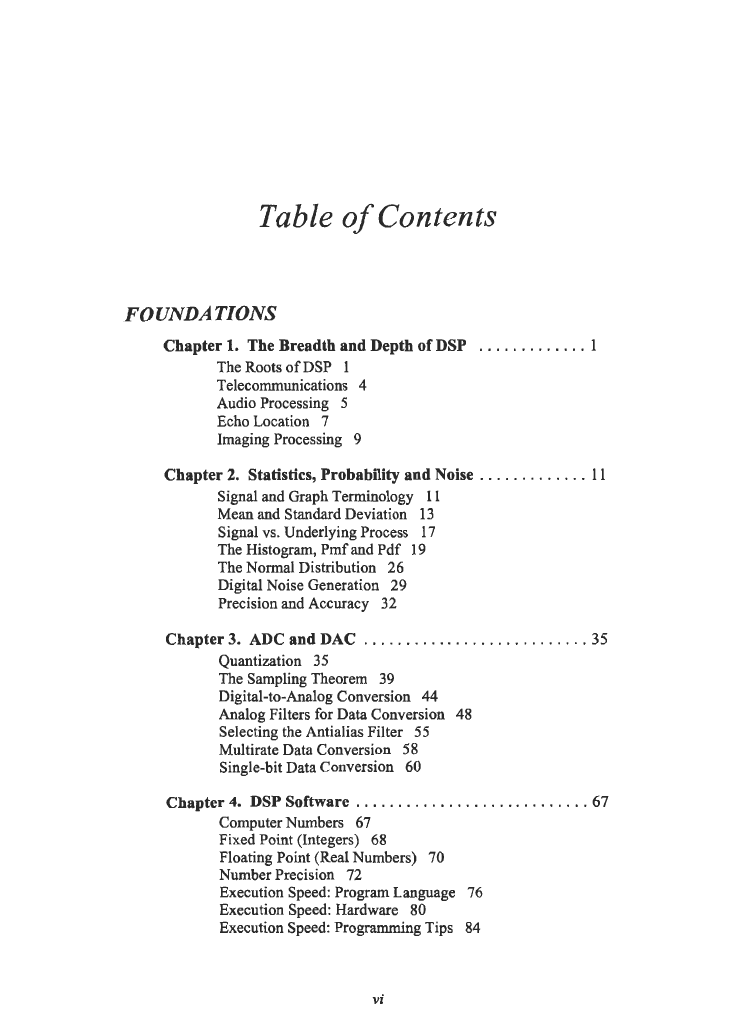
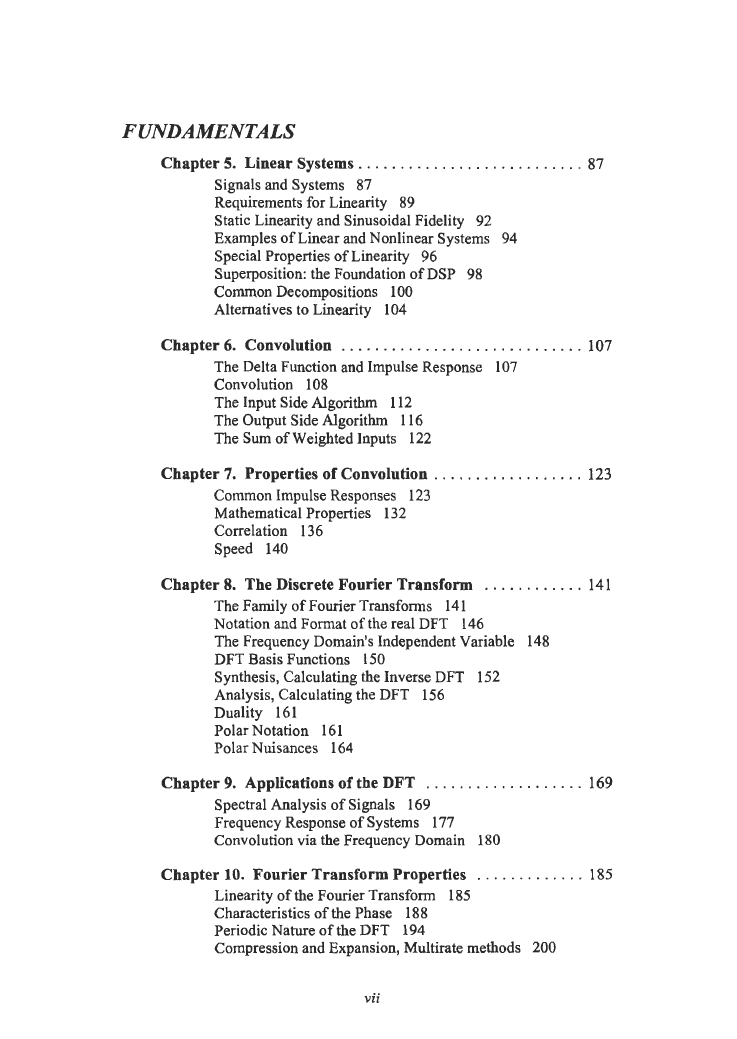








 2023年江西萍乡中考道德与法治真题及答案.doc
2023年江西萍乡中考道德与法治真题及答案.doc 2012年重庆南川中考生物真题及答案.doc
2012年重庆南川中考生物真题及答案.doc 2013年江西师范大学地理学综合及文艺理论基础考研真题.doc
2013年江西师范大学地理学综合及文艺理论基础考研真题.doc 2020年四川甘孜小升初语文真题及答案I卷.doc
2020年四川甘孜小升初语文真题及答案I卷.doc 2020年注册岩土工程师专业基础考试真题及答案.doc
2020年注册岩土工程师专业基础考试真题及答案.doc 2023-2024学年福建省厦门市九年级上学期数学月考试题及答案.doc
2023-2024学年福建省厦门市九年级上学期数学月考试题及答案.doc 2021-2022学年辽宁省沈阳市大东区九年级上学期语文期末试题及答案.doc
2021-2022学年辽宁省沈阳市大东区九年级上学期语文期末试题及答案.doc 2022-2023学年北京东城区初三第一学期物理期末试卷及答案.doc
2022-2023学年北京东城区初三第一学期物理期末试卷及答案.doc 2018上半年江西教师资格初中地理学科知识与教学能力真题及答案.doc
2018上半年江西教师资格初中地理学科知识与教学能力真题及答案.doc 2012年河北国家公务员申论考试真题及答案-省级.doc
2012年河北国家公务员申论考试真题及答案-省级.doc 2020-2021学年江苏省扬州市江都区邵樊片九年级上学期数学第一次质量检测试题及答案.doc
2020-2021学年江苏省扬州市江都区邵樊片九年级上学期数学第一次质量检测试题及答案.doc 2022下半年黑龙江教师资格证中学综合素质真题及答案.doc
2022下半年黑龙江教师资格证中学综合素质真题及答案.doc